10 Must-Knows About Rhodesian Ridgebacks

Rhodesian Ridgebacks are undoubtedly a fine looking and fabulous dog breed that if you can provide the proper care for you should definitely consider getting. But what is the correct care for this marvelous breed and what else do you need to know?
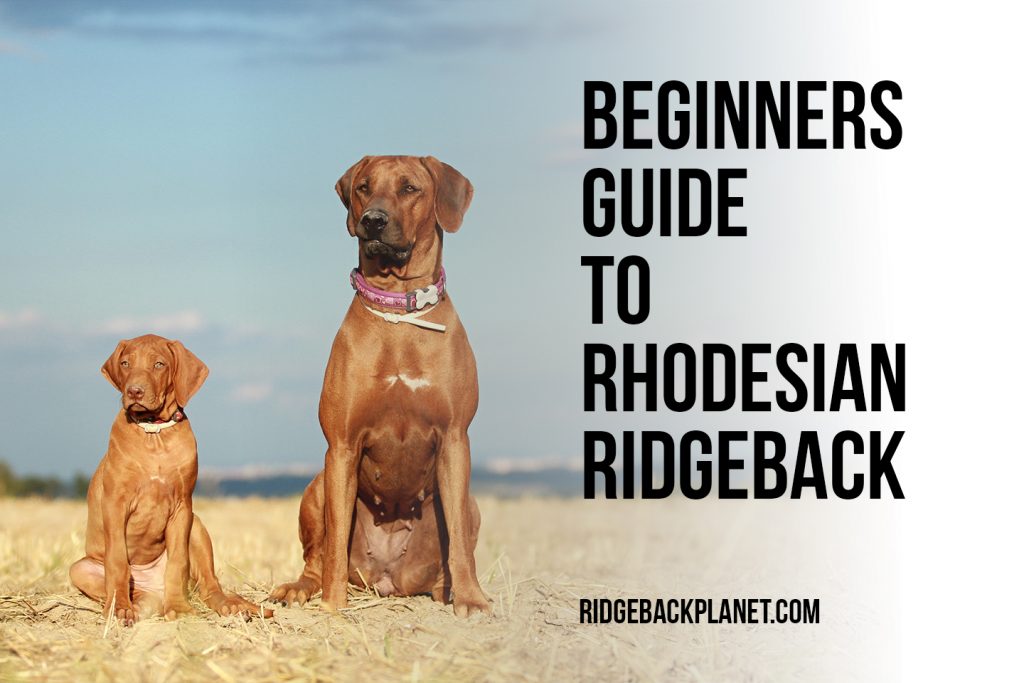
It doesn’t matter what dog breed you are thinking of adding to your family, you should always do your research first. After all, not every dog breed is suited to every family or home and the Rhodesian Ridgeback is no different.
Rhodesian Ridgebacks are undoubtedly a fine looking and fabulous dog breed that if you can provide the proper care for you should definitely consider getting. But what is the correct care for this marvelous breed and what else do you need to know?
The answer to this question is not quickly given. There is a lot you need to know about the Rhodesian Ridgeback and a lot you will need to consider. For example, can you provide the home that they require? Can you exercise them enough? Can you cope with their somewhat stubborn and dominant personalities? If the answer to these questions is yes then you might just be the owner that this breed requires, good news, eh? However, to be sure, you should also read on and find out more.
In this beginner’s guide to the Rhodesian Ridgeback, we will cover everything you need to know and probably a little more. From appearance to feeding, to health care and everything in between, you will find it all here!
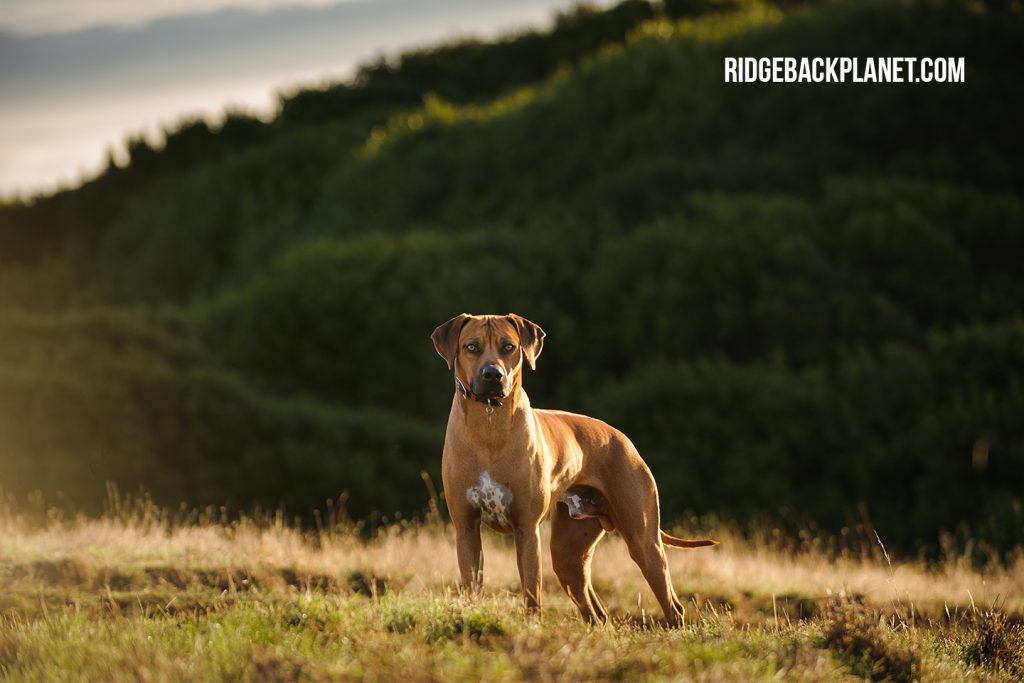
Rhodesian Ridgeback History
Ridged breeds, thought to be the ancestors of the Rhodesian Ridgeback, can be traced back as far as 4000 BC where they were depicted in drawings in both Egypt and Zimbabwe. In both cases, the drawings were found in burial tombs and appeared to be revered as only prized possessions would have been depicted there.
By the 16th/17th century, the ridged breed from Zimbabwe now called the Hottentot, after the tribe that domesticated them, was being widely used in South Africa as a hunting dog. It was here that the European Boer settlers discovered them and decided to use them to their advantage.
The European Boer settlers had brought their own dog breeds with them to South Africa such as the Mastiff, the Great Dane, Bloodhound, Pointer, Staghound, and Greyhound. However, they needed a dog that could withstand the hot and cold temperatures, water, and rough bush, whilst performing the guarding and hunting duties required of them. To obtain such a breed, the European dogs were bred with the Hottentot creating, yes you guessed it, the first Rhodesian Ridgebacks.
This new breed of dog hunted by both sight and scent and was absolutely devoted to the protection of the families they were working for. They were used to flush partridge, pull down wounded stags, and guard the farms against prowlers at night. They were excellent at their jobs due partly to being able to withstand the rigour of the African bush and hold up under drastic temperature changes from the heat of day to the chill of night.
In the 1870s several of this new breed of hunting dog were taken to Rhodesia where they were used to hunt lion, chasing and harassing them until their owners could get there and shoot them. So successful were these dogs at doing their jobs that they became extremely popular and gained themselves the name ‘lion dog.’ The ridge found on the back of the lion dog was its trademark.
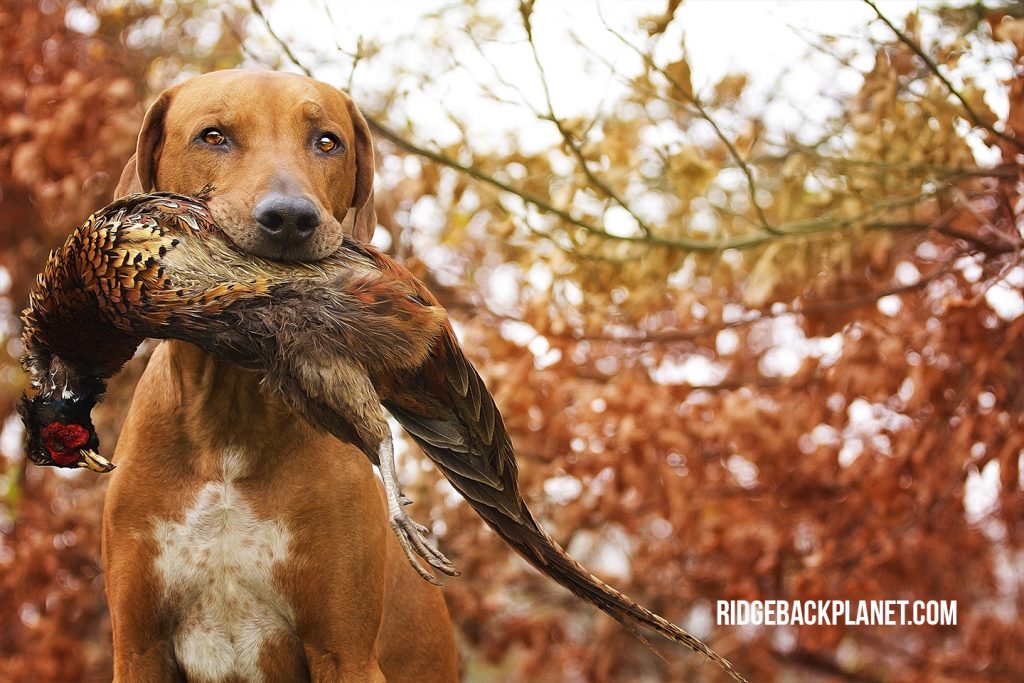
By the 1920s there were many variants of the lion dog so a meeting was held to elucidate the most desirable traits and points. The resulting list of ‘attributes’ then became the breed standard and the basis for the kennel club standards today. The name lion dog was also changed at this time as it was thought to sound too savage. The new name, of course, was Rhodesian Ridgeback.
Rhodesian Ridgeback Appearance & Grooming
The Rhodesian Ridgeback is a large and muscular hound with a distinctively raised ridge of hair running in a line down the centre of its back. This ridge is formed by whorls of hair that grow in the opposite direction to the rest of the coat. To state the obvious the Rhodesian Ridgeback gets its name from this attribute.
Colour wise this breed ranges from light to dark wheaten with some having white markings on their chest and feet. Occasionally you may also find brindle or sable coloured Rhodesian Ridgebacks too. Eye colour, strangely perhaps, will depend on the colouration of this breeds nose, with black nosed Rhodesian Ridgebacks having dark eyes and brown nosed, amber eyes.
Starting from the head the Rhodesian Ridgeback has a flat skull with a long and powerful muzzle. Medium sized ears are set high atop this breeds head which are wide at the base and taper to a round point at the top. They have a body which is muscular, powerful, and slightly longer than they are tall. The tail is lengthy, tapers from base to tip, and curves upwards ever so slightly. Male Rhodesian Ridgebacks are larger than the females with the male standing 25-27 inches at the shoulder and weighing around 85lbs. The female, on the other hand, should be 24-26 inches at the shoulder and weigh around 70lbs.
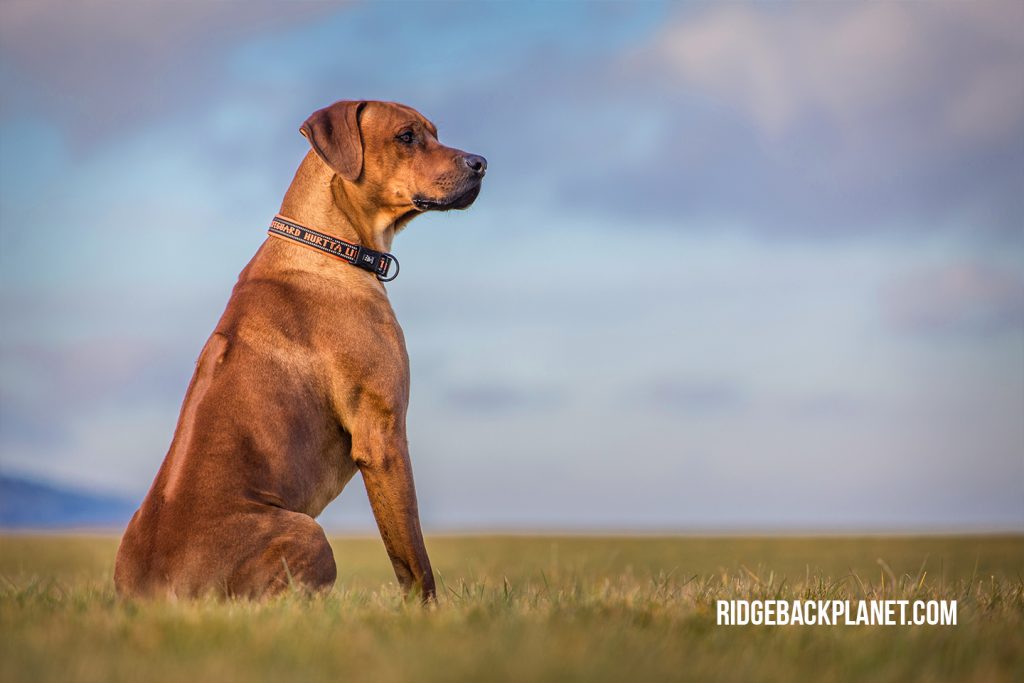
From a grooming point of view the Rhodesian Ridgeback is low maintenance. Their coat is short and shiny with virtually no odour, and they shed only lightly throughout the year. Be aware, however, Rhodesian Ridgebacks that spend a great deal of time outdoors may be prone to heavier shedding.
To keep your Rhodesian Ridgebacks coat shiny and healthy you should brush them once a week with a rubber brush. They may also benefit from being down with a wet cloth at the same intervals. Baths should only be given if they are needed, perhaps once or maximum twice per year.
Other essential maintenance includes checking on your Rhodesian Ridgebacks ears on a regular basis. This check should include looking for wax build ups, irritation, and infection. As needed you should clean the ear with a cotton ball and vet approved cleanser. Never use cotton swabs or buds on your dog’s ears.
Teeth should also be cleaned on a weekly basis to prevent tartar build up, promote gum health, and keep bad breath at bay. You can purchase doggy dental products at most pet stores or at your vets. Maintenance such as teeth cleaning should be started when your Rhodesian Ridgeback is a puppy as this will help them to get used to practices such as this.
Finally, but not least importantly, you may need to trim your Rhodesian Ridgebacks nails. This should be done on a monthly basis for those dogs that do not wear their toenails down naturally. Care should always be taken if you choose to do this yourself as blood vessels run down the nails. These blood vessels are not always easy to see and if you cut into one whilst trimming your Rhodesian Ridgebacks nails, it may bleed quite heavily. If you are at all nervous about cutting your dog’s nails, or cannot see the blood vessels, your vet or a grooming parlour will be more than happy to do it for you.
Rhodesian Ridgeback Personality & Temperament
Contrary to popular belief the Rhodesian Ridgeback is an affectionate, gentle, and playful, big bundle of joy that loves its family unconditionally. They are also incredibly intelligent, loyal, playful, and love to be the centre of attention. They rarely bark, though they do snore loudly, and they are just as happy curled up in your lap, if you’ll let them, as they are running around and generally being exuberant.
Probably due to their intelligence Rhodesian Ridgebacks can become bored easily which can lead to destructive behaviour. Chewing rugs, digging gardens up, and eating shoes are common signs of this.
Rhodesian Ridgebacks can also be incredibly stubborn and headstrong when it comes to what they want to do, and what you want them to do, so good training is essential. Being standoffish with strangers is also another common trait in this breed but one that can be addressed easily with good socialisation.
Speaking of good socialisation, there is some debate over whether a dog breeds personality and temperament are learned or genetic. It is the nature versus nurture discussion and an interesting one at that. The common belief at the moment would be that it is a mix of both with personality and temperament being guided by:
- The way the mother treats her pups during the first six weeks
- The traits that they inherit
- The level of socialisation they are exposed to
Rhodesian Ridgeback Health
When it comes to providing the correct care for your Rhodesian Ridgeback ensuring they are healthy has to be top of the list. Basics to ensure this include feeding them the right diet, ensuring they get enough exercise, both of which we will cover later, and providing regularly needed vaccinations and treatments such as:
Yearly Vaccine – These should be started when your Rhodesian Ridgeback is a puppy eight weeks of age. The first set usually comprises of three vaccinations followed up every year with a booster. The purpose of this vaccine is to prevent your dog from contracting distemper, parvovirus, hepatitis or rabies.
Flea and Tick Treatments – These should be provided every eight weeks with treatment being available in a variety of ways. There are tablets, powders, and liquids which are squirted onto the neck. Which you give is up to you but they are a necessity to prevent your Rhodesian Ridgeback from flea or tick infestation.
Yearly Check-Up – Prevention is always better than cure and a yearly veterinary check-up for your Rhodesian Ridgeback can prevent, or at the very least, catch any illness or condition your beloved pet may have or be developing. You should also check yourself throughout the year for any weird lumps or bumps on your pet or other signs they may be ill.
As with all breeds Rhodesian Ridgebacks are more likely to develop certain conditions than others. These include:
Dermoid Sinus – The ridge along the Rhodesian Ridgebacks spine is technically classed as an abnormality, and as with all abnormalities can lead to problems. In the Rhodesian Ridgebacks case this would be dermoid sinus which is a condition that runs deep into the tissue of the tubular indentation (ridge) creating an infection, serious disease, and pain.
Gastric Dilation Volvulus – Commonly known as GDV this complicated sounding condition translates simply into bloat which is common in deep-chested breeds of dog such as the Rhodesian Ridgeback.
Elbow/Hip Dysplasia – This is where the hip/elbow socket doesn’t fully cover the ball section of the bone leading to an easy dislocation and possibly arthritis. Surgery can be used to correct this condition which is more prevalent in obese dogs.
Hypothyroidism – An underactive thyroid which does not provide enough thyroid hormone. Symptoms include an intolerance to cold, tiredness, constipation, depression, and obesity.
Deafness – Due to the size of their ears Rhodesian Ridgebacks are prone to ear infections which can, if left untreated, result in deafness.
Rhodesian Ridgeback Nutrition
Rhodesian Ridgebacks should be fed a premium quality dry dog food that provides balanced nutrition. This can be mixed with canned foods, water, or broth for those dogs that do not like/ or cannot eat their food dry.
Perhaps surprisingly, this breed also enjoys cooked eggs, cottage cheese, fruits, and vegetable which can be fed to them safely. These types of food, however, should not make up more than 10% of their daily food allowance and should not be given with any regularity to puppies. With regards to puppies, this is not because it will harm them but rather that they are at an age where they may refuse their own dry food in favour of ‘human food’.
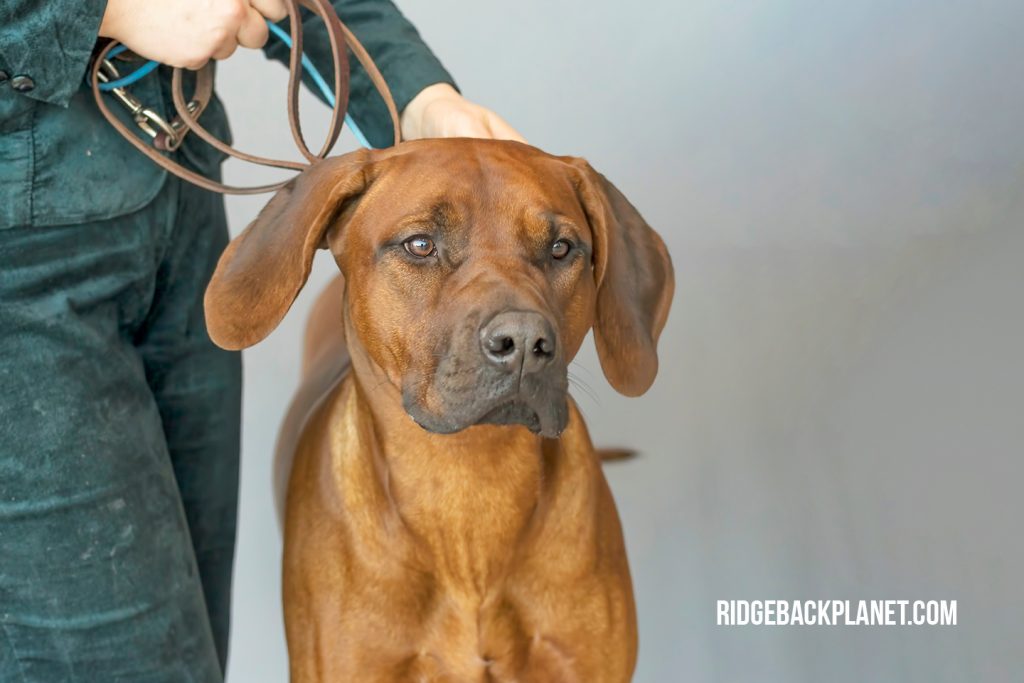
With regards to regularity of feeding and amounts, you should feed good quality products will have a feeding guide on their packaging that you should follow. Recommended feeding schedules should be as follows:
- Puppies 8-12 weeks four meals daily
- Puppies 3-6 months three meals daily
- Puppies 6-12 months two meals daily
- Puppies and dogs 12 months plus one meal daily*
*Please note that some Rhodesian Ridgebacks may fare better with two small meals a day than one larger.
Rhodesian Ridgeback Costs
There is no absolute, exact figure that can be put on the cost of purchasing and keeping a Rhodesian Ridgeback as part of your family. However, there are expenses that you will need to take into account and budget for. These include:
- Purchase of puppy from breeder $700-2000
- Purchase of puppy/dog from a rescue centre $100-200
- Annual Vaccinations $250
- Food $35-50
- Flea/Tick Treatments $100
Please note these costs are only a guide and may vary. They also do not cover any unforeseen circumstances, kennelling, toys, bedding bowls, collars, leashes, etcetera.
Rhodesian Ridgeback Training
Providing training is incredibly important if you are going to own a Rhodesian Ridgeback. They are, as previously stated, intelligent dogs with a tendency to be very independent, stubborn, and a love of doing what they, rather than you, want.
Due to their nature any training given needs to be in a firm but never harsh manner. Rhodesian Ridgebacks will not respond favourably to being shouted at or reprimanded strongly. In fact, they are highly likely just to completely ignore you and any commands you give.
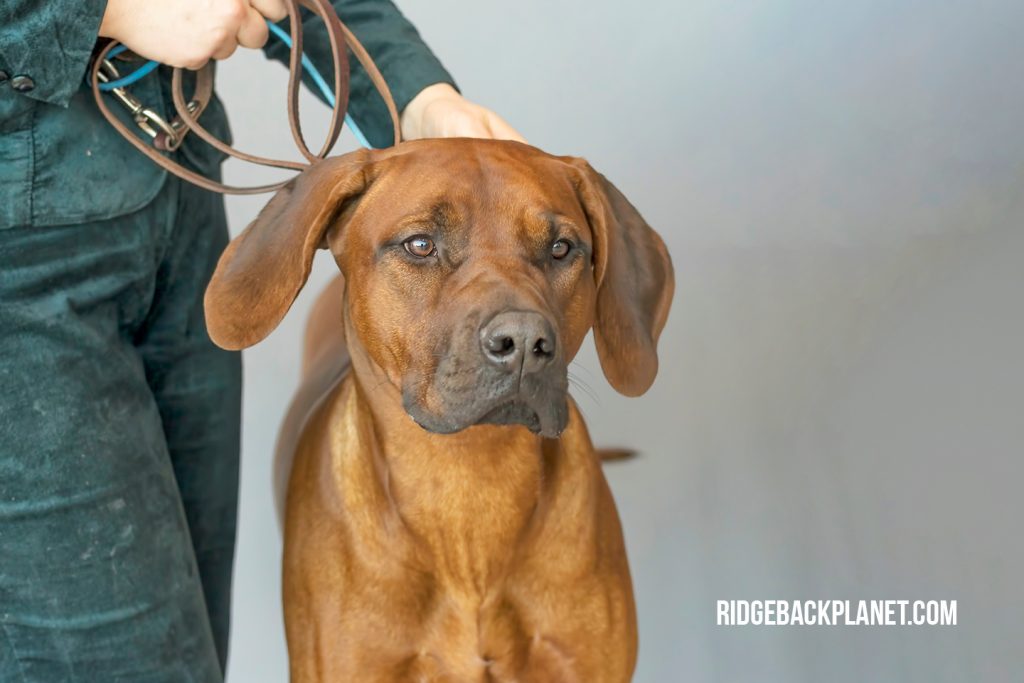
Basic training for a Rhodesian Ridgeback should include social skills first as these are the skills they will use the most. These include things like learning not to jump up, going to a location on demand, staying away from the dinner table, sitting, staying, and coming to heel.
Rhodesian Ridgeback Things To Avoid
There are three important things you will definitely want to avoid if you choose to have a Rhodesian Ridgeback in your home. These are:
Giving Guard Dog Training – Rhodesian Ridgebacks are natural guard dogs that feature on virtually every ‘top guard dog’ list you will find. They will be standoffish with strangers, as previously stated, and certainly will not let anyone near those they are loyal to. However, herein lies the problem with regards to guard dog training in that it could possibly just heighten aggression. This is the last thing you want to do with this breed as it may lead to your Rhodesian Ridgeback physically attacking someone.
Not Socialising Your Rhodesian Ridgeback – As Rhodesian Ridgebacks are already mistrustful of strangers it is incredibly important that they are socialised with as many people as possible. This will help them not to become or develop too much aggression. Additionally Rhodesian Ridgebacks also have a huge prey drive meaning that they will chase other dogs, cats, rabbits, and wildlife. Ensuring that they are socialised with these different animals will decrease this drive.
Not Training Your Rhodesian Ridgebacks – Put simply, untrained Rhodesian Ridgebacks may become dominant and behave poorly. This will not end well and may result in the destruction of property, chasing other animals, and unwanted social behaviour.
Rhodesian Ridgeback Sources
There are two main ways of purchasing a Rhodesian Ridgeback and these are through a private breeder or from a rescue centre. Which you choose is up to you, with neither option being better than the other. If you do choose to go down the private breeder route, however, there are some things you should note.
Not all breeders are equal and you should research them carefully before deciding which one to opt for. A good source of information on reputable breeders are the clubs such as Rhodesian Ridgeback Club Of Great Britain and Rhodesian Ridgeback Club Of USA.
Once you have decided on a breeder, you should ensure that when you visit you can not only see the puppies but the mother as well. This will provide you with a good idea of what your puppy will be like and that you are not buying from a puppy farm where the mothers are never seen.
When choosing a puppy note how they interact with you, whether they are highly strung, sharp, or aggressive, and avoid those that are. Pick them up and see if they like being handled and watch their interaction with mum. Well balanced puppies will enjoy your company, let you handle them, and interact well with their mother.
Finally, choose a puppy that you bond with, and that bonds with you. Quite often it is not really the owner that picks the puppy but quite the reverse, and that’s just fine. After all, the pair of you are going to spend a number of years together and you want that to be happily ever after.
